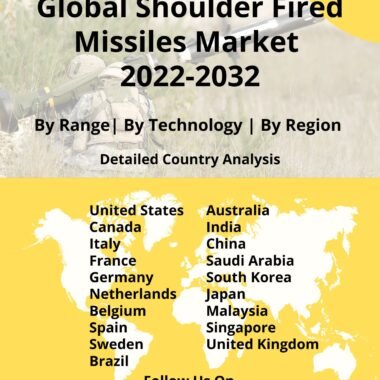Description
What does Defense Simulation Imply?
Defense simulation training creates a real-time environment surrounding the soldier units or individuals taking part in the training. This methodology is cost-effective and time-efficient. In addition, training within simulations allows the senior trainer to regulate all environmental variables and provide the training unit with improved observation feedback. The training outcomes are similar to those obtained from a real exercise. Training simulations can be used to simulate actual war or combat situations in a variety of ways. The Army uses virtual, constructive, and live simulations to replicate tactical encounters. To accomplish the overall training objectives for the training unit, a variety of simulation methodologies might be used. Moreover, they can be used at any time, under every weather condition.
Simulation training is a method of simulating combat environment, weapon system performance, combat mission, and combat process with high fidelity using modern simulation technology based on virtual reality technology, artificial intelligence technology, and distributed simulation technology.
Defense Simulation Training Classifications
Military simulation training can be split into three types based on the application level: campaign tactics simulation training, equipment skill simulation training, and strategy simulation training. During campaign tactical simulation training, coordinated action drills and combat command are launched around specific combat tasks.
Equipment skill simulation training, which may be divided into operation simulation training and maintenance simulation training, refers to simulation learning to enhance the level of equipment operation operations and managerial support. Operation simulation training simulates the operation process of weapons and equipment by using simulation technology that saves time and effort, reduces weapon and equipment technical wear, and is extensively utilized in numerous types of military equipment training. Maintenance simulation training entails using simulation technologies to represent the real maintenance process, which includes three stages: fault analysis, fault presentation, and fault eradication. Virtual maintenance can address issues such as fault recurrence difficulty and the inability to provide practical training.
Strategic simulation training focuses on strategic challenges, as well as assisting intermediate and senior commanders in making strategic decisions and developing strategic thinking.
Use of AR, VR in Defense Simulator Market
Virtual reality is a significant tool in defense simulations since it offers various advantages. Virtual reality can be used to imitate any type of instruction by recreating different surroundings. Despite national military budget cuts, it proved to be a viable and cost-effective option. For instance, in May 2021, The People’s Liberation Army has deployed virtual reality technology in training and it allows officers and soldiers to gain enhanced combat capability more efficiently. Moreover, in October 2021, Optimus System, a South Korean military training simulator firm had developed a DEIMOS, a next-generation Metaverse-based military training system. The product’s goal is to create training environments for military personnel, including operational training, precision shooting, and tactical behavior instruction.
In September 2021, Bohemia Interactive Simulations, a developer of advanced military simulation and training software, had unveiled the latest major software release of VBS4, the virtual and constructive simulation platform.
As a result, certain developments can aid soldiers in gaining experience and situational awareness while also lowering training costs and boosting training safety.
Developments in the Defense Simulator Industry
Rising territorial conflicts around the world have resulted in increased defense spending, which in turn has fuelled the global military simulation and training sector. The use of commercial-off-the-shelf solutions, a rising emphasis on hybrid and asymmetric warfare, and the evolution of wargaming, and the use of gaming software for training reasons fuel the demand for defense training and simulation solutions.
The use of commercial gaming in defense training and simulation is becoming more common as game engines are widely adopted. For instance, Paradoxum Games created the Tower Defense Simulator. Players must work together and spend real money to build and upgrade towers that fight various enemies. Moreover, a Roblox game is all about fending off waves of attackers, holding defensive positions with towers, and catching foes in the constant crossfire. Tower Defense Simulator codes tend to expire quickly, so reap the benefits of them when it’s available.
Industry participants are likely to pursue initiatives such as acquisitions and product releases. Contractual agreements have become a crucial approach for major significant players in the industry to attain market expansion.
In March 2021, CAE Inc.’s CAE USA had announced that it had received a contract from United States Customs and Border Protection, a federal law enforcement agency to provide aircraft pilot training services.
In June 2021, InVeris Training Solutions, an integrated live-fire, and virtual weapons training systems and services provider for international and domestic military forces, had successfully completed on-site acceptance testing for 73 EF88 weapon simulators and 14 Mobile Weapon Training Simulation Systems for the Australian Defence Force in 2021. The MWTSS is a mobile version of the stationary WTSS with a single screen that will be deployed to remote places across Australia, and worldwide. An additional four MWTSS have been procured, and the recently fielded trial system will be upgraded to current standards before being returned to service, bringing the total number of MWTSS to 19.
In June 2020, Airbus, an Aerospace and defense company had contracted to deliver simulator cockpit modifications for the German Eurofighter aircraft. This deal additionally involves the delivery of two additional FMS simulators, bringing the total number of simulators to four. The major goal of this contract was to improve German Eurofighter pilots’ training ability.
Thereby, certain developments and contractual initiatives in the global defense simulator industry will provide ample prospects for local and international vendors in this industry.




